calsfoundation@cals.org
Franklin County
| Region: | Northwest |
| County Seats: | Charleston, Ozark |
| Established: | December 19, 1837 |
| Parent County: | Crawford |
| Population: | 17,097 (2020 Census) |
| Area: | 608.96 square miles (2020 Census) |
| Historical Population as per the U.S. Census: | |||||||||
|
1810 |
1820 |
1830 |
1840 |
1850 |
1860 |
1870 |
1880 |
1890 |
1900 |
|
– |
– |
– |
2,665 |
3,972 |
7,298 |
9,627 |
14,951 |
19,934 |
17,395 |
|
1910 |
1920 |
1930 |
1940 |
1950 |
1960 |
1970 |
1980 |
1990 |
2000 |
|
20,638 |
19,364 |
15,762 |
15,683 |
12,358 |
10,213 |
11,301 |
14,705 |
14,897 |
17,771 |
|
2010 |
2020 |
|
|
|
|
|
|
|
|
|
18,125 |
17,097 |
|
|
|
|
|
|
|
|
| Population Characteristics as per the 2020 U.S. Census: | ||
| White |
15,367 |
89.9% |
| African American |
79 |
0.5% |
| American Indian |
214 |
1.3% |
| Asian |
163 |
1.0% |
| Native Hawaiian or Other Pacific Islander |
10 |
0.1% |
| Some Other Race |
183 |
1.1% |
| Two or More Races |
1,081 |
6.3% |
| Hispanic Origin (may be of any race) |
491 |
2.9% |
| Population Density |
28.1 people per square mile |
|
| Median Household Income (2019) |
$38,923 |
|
| Per Capita Income (2015–2019) |
$20,480 |
|
| Percent of Population below Poverty Line (2019) |
23.0% |
|
Franklin County, bisected by the Arkansas River into a forested northern section and a southern section primarily of farmland, was formed on December 19, 1837, from Crawford County and was named for Benjamin Franklin, one of the Founding Fathers of the United States and its first postmaster general. It is rich in minerals and had one of the first oil strikes in Arkansas.
European Exploration and Settlement
The area that became Franklin County has been inhabited since the end of the Ice Age, about 12,000 BC. Paleoindians hunted and gathered wild plants and other resources, residing in open air campsites and occasionally using rock shelters. Agricultural settlements began to be established during the Mississippian Period (900—1600 AD), raising corn and other domesticated plants. The Osage used lands to the north of the Arkansas River as hunting grounds, although their villages were in modern-day Missouri and Oklahoma. Hunters and travelers from various tribes, as well as European explorers and traders, traveled along the Arkansas River.
Louisiana Purchase through Early Statehood
By treaty, the Cherokee controlled the county between 1819 and 1828, but they allowed some of the European settlers to remain because they had useful skills such as blacksmithing. In 1828, when the Cherokee were removed to Indian Territory and the area was opened to settlement, people came from Kentucky, Tennessee, Louisiana, and surrounding states. The French Beneux family represented the only settlers not from the United States.
Ozark, north of the Arkansas River, was made the county seat in 1838, a year after Franklin County was established. Charleston was settled in the 1840s by R. C. Thaxton and C. R. Kellum. Because crossing the river was difficult, Charleston was designated a second county seat in 1901. Both the Franklin County Courthouse for the Northern District and the Franklin County Courthouse for the Southern District are listed on the National Register of Historic Places.
Civil War through Reconstruction
William Mansfield represented the county during the 1861 Secession Convention. At the time of the 1860 census, the county included 6,330 white citizens with 962 enslaved people and six free people of color.
Franklin County did not see battles during the Civil War, though there were skirmishes in 1863 and 1864 at Mulberry Springs, Ozark, Moffat’s Station, and Charleston. The county supplied soldiers to both the Confederate and Federal armies. The Confederate troops engaged in the Action at Fayetteville used Ozark as a base of operations, and there were depredations by bushwhackers in the area. The courthouse at Ozark was burned. Charleston was almost entirely burned in 1863 but was rebuilt after the war, and was incorporated in 1874.
In 1876, the Reverend Isham L. Burrow, a Methodist minister, founded a school at Altus called Central Institute, which later became Hendrix College. After the school moved to Conway (Faulkner County) in 1890, Burrow opened another college, which he named Hiram and Lydia College in honor of his parents. It remained in use for sixteen years.
Post Reconstruction through the Early Twentieth Century
Coal mining was important from the 1870s through the 1930s, with nearby mines such as the Black Diamond, Lewis, Flying Dutchman, and Smith providing work for many. The Kline Coal Company at Altus and the Black Diamond and Franklin Coal Companies at Ozark were among Franklin County’s coal companies. Altus was the home of Local 2121 of the United Mine Workers (UMW), and a monument to local coal miners is located in that city. Six coal mines operating in the area made the town of Denning the largest settlement in the county for a period in the early twentieth century.
In 1875, the railroad came to Franklin County, and towns grew up along the line. Altus was the highest point on the Iron Mountain line between Fort Smith (Sebastian County) and Little Rock (Pulaski County), and this was the source of its name (“altus” is the Latin word for “high”).
The management of the Iron Mountain line sought railroad workers, and also wanted to establish towns along the railroad line in sparsely inhabited areas such as Franklin County. Accordingly, the company advertised to immigrants from countries where anti-Catholic sentiment was encouraging emigration among Catholics, and it set aside land for a Benedictine community that became the Subiaco Abbey in Logan County.
The climate and terrain in northern Franklin County were suited to grape growing, and a group of Swiss and German farmers came to Altus and established wineries. The Post, Sax, and Wiederkehr wineries were among the earliest, finding their customers among the railroad workers and passengers, as well as the miners. One of the Swiss immigrants to the area was Professor Joseph Bachman, who developed grape cultivars that gained national recognition.
Prohibition affected the wineries, closing many. Some turned to the raising of table grapes, but the days of unregulated family wineries were past. The Altus Cooperative Winery, founded by James Post in 1938, helped the wineries to reestablish themselves after Prohibition. The southern section of the county remains “dry” (meaning that alcohol sales are prohibited), but the northern section, where the wineries are located, allows the sale of alcohol.
In the southern section of the county, cotton was the primary crop, though dairy cattle gained in importance in the twentieth century. Franklin County is located in the Arkoma Basin and is the site of at least ten natural gas and oil fields. The gas fields were an important part of the economy in the 1940s.
Author Janice Holt Giles was born in Altus in 1905. Though she is generally thought of as a Kentucky author, her book The Plum Thicket is set in her native Arkansas.
Franklin County native Oscar Franklin Miller received the Medal of Honor posthumously for his service in World War I.
The Mountain Crest Academy operated for more than a decade, offering instruction through the twelfth grade for students from Franklin and nearby counties.
World War II through the Modern Era
The most decorated soldier of the Eighty-third Infantry Division in World War II, Captain William Leon Russell, was a native of Cecil in Franklin County. He received seven Purple Hearts and a Silver Star.
Charleston was the first town in the former Confederacy to integrate its public elementary and high schools in 1954. Charleston native Dale Bumpers, who later became Arkansas governor and U.S. senator, worked for recognition of the town’s place in history for this decision, and the school district became a National Commemorative Site. Ozark desegregated peacefully in 1957. While Charleston continued to have some political arguments over desegregation, the Charleston and Ozark school districts were both integrated by the time the Arkansas Advisory Committee to the U.S. Commission on Civil Rights made its Report on Arkansas Schools in 1963, while the County Line district continued to send African-American students to black schools in Fort Smith.
Franklin County continues to be primarily agricultural. The Post and Wiederkehr wineries are currently among the top 100 in the nation in terms of annual production, with other wineries including Chateau Aux Arc Vineyards and Mount Bethel Winery. Livestock and poultry make up more than ninety-seven percent of all the agricultural produce of the county.
Poultry production is now the most significant industry in Franklin County. Butterball has a turkey-processing plant (formerly owned by Cargill and ConAgra) in Ozark.
Attractions
The wineries of Franklin County attract tourists and local visitors throughout the year. The Altus Grape Festival takes place every year in Altus. The Wiederkehr Weinfest is held annually. Altus is also the site of the Coal Miners Memorial and of St. Mary’s Catholic Church (Our Lady of Perpetual Help), built in 1879 by Father Beatus Maria Ziswyler, which is on the National Register of Historic Places. Mulberry River is popular for outdoor sports including canoeing and fishing. The first season of the television show The Simple Life was filmed in and around Altus.
The Cherokee Prairie, 584 acres of natural tallgrass prairie maintained by the Arkansas Natural Heritage Commission, is two miles north of Charleston. Numerous birds and plants are found in this remnant of the original Cherokee Prairie, which once covered most of the Arkansas River Valley.
Access to the Ozark Highlands Trail is possible at points near Ozark, the largest town in the county. Ozark is also the site of an Arkansas Tech University satellite campus and the Arkansas Valley Technical Institute.
Well known Arkansans associated with the county include Dale and Betty Bumpers, author Francis Irby Gwaltney, and puzzle master Helen Lyle Pettigrew.
For additional information:
Gill, Lauren. “The Prison Next Door.” Bolts Magazine, September 11, 2025. https://boltsmag.org/arkansas-prison-franklin-county/ (accessed September 12, 2025).
Goodspeed’s History of Northwest Arkansas. Chicago: Goodspeed Publishing Company, 1889.
Shropshire, Lola. Franklin County. Charleston, SC: Arcadia, 2000.
Rebecca Haden
Fayetteville, Arkansas
Revised 2022, David Sesser, Henderson State University
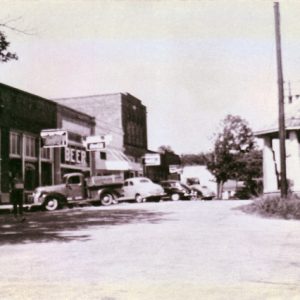 Altus Street Scene
Altus Street Scene 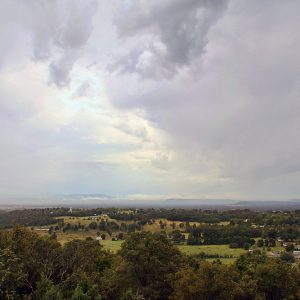 Arkansas River Valley
Arkansas River Valley 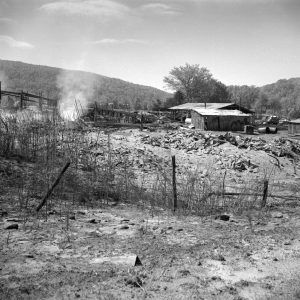 Cass Stave Mill
Cass Stave Mill 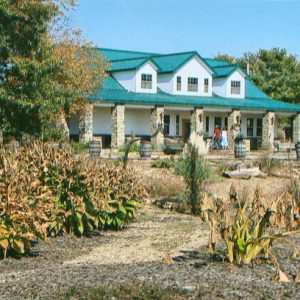 Chateau Aux Arc Vineyards and Winery
Chateau Aux Arc Vineyards and Winery 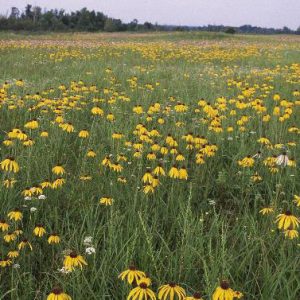 Cherokee Prairie Natural Area
Cherokee Prairie Natural Area 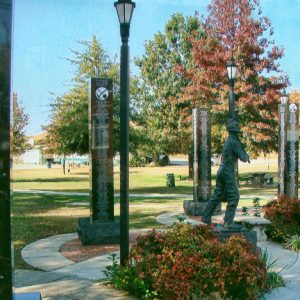 Coal Miners Monument
Coal Miners Monument 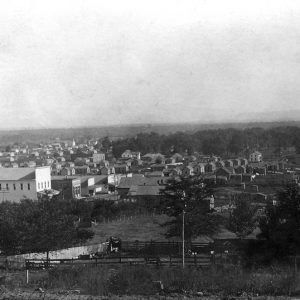 Denning
Denning 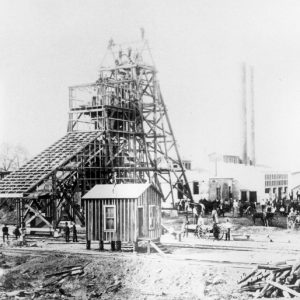 Denning Coal Mine
Denning Coal Mine 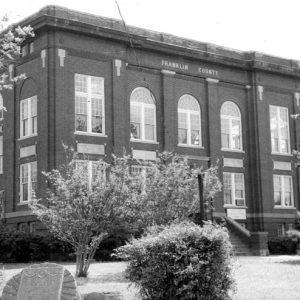 Franklin County Courthouse
Franklin County Courthouse 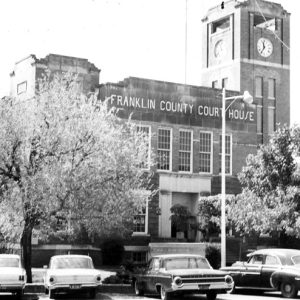 Franklin County Courthouse
Franklin County Courthouse 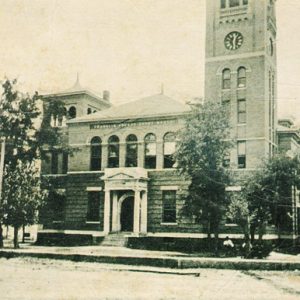 Franklin County Courthouse
Franklin County Courthouse 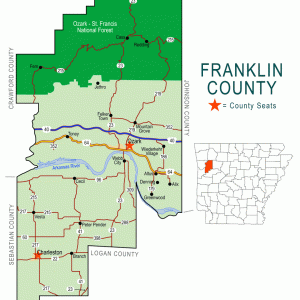 Franklin County Map
Franklin County Map  Benjamin Franklin
Benjamin Franklin  H. E. Flanagan Prairie Natural Area
H. E. Flanagan Prairie Natural Area 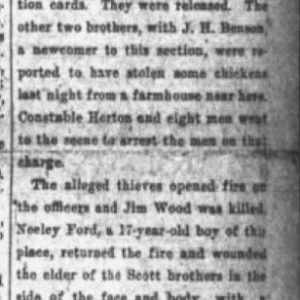 Logan County Draft War Article
Logan County Draft War Article 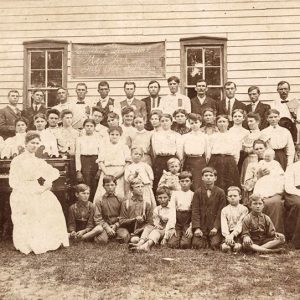 Meg School
Meg School  Ozark REA Plant
Ozark REA Plant 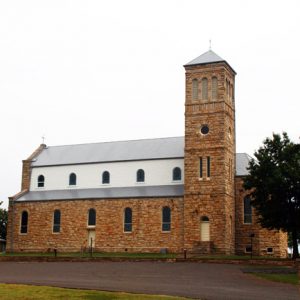 Saint Mary’s Catholic Church
Saint Mary’s Catholic Church 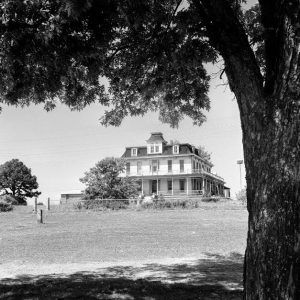 Saint Mary’s Catholic Church
Saint Mary’s Catholic Church  Olin Travis
Olin Travis 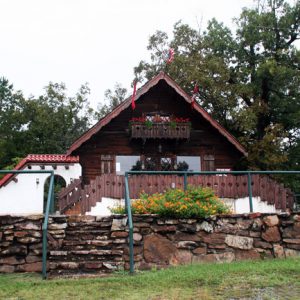 Wiederkehr Wine Cellars
Wiederkehr Wine Cellars 




I worked at the poultry plant in Ozark for about twenty-five years, leaving in 2006 just before ConAgra Foods sold to the current owner, Butterball.
Turkey production in Franklin County dates to the early 1940s or perhaps a little earlier, with Harold Dodgen building the original Ozark processing plant on River Street. This building was demolished about ten years ago, but the original foundation remains today. I believe the company donated the original plant site to the city.
Later, another plant was built and is the current site just off Hwy. 64 east of downtown in the late 1950s or early 1960s. Cargill bought Mr. Dodgen out in the late 1960s or early ’70s. Cargill tore down this 50s era plant and built a new and greatly expanded processing facility on the same site in 1992-93. This new plant went into operation in March 1993. Cargill remained the owner until ConAgra Foods bought the operations in March 2003 and retained ownership until late 2006.